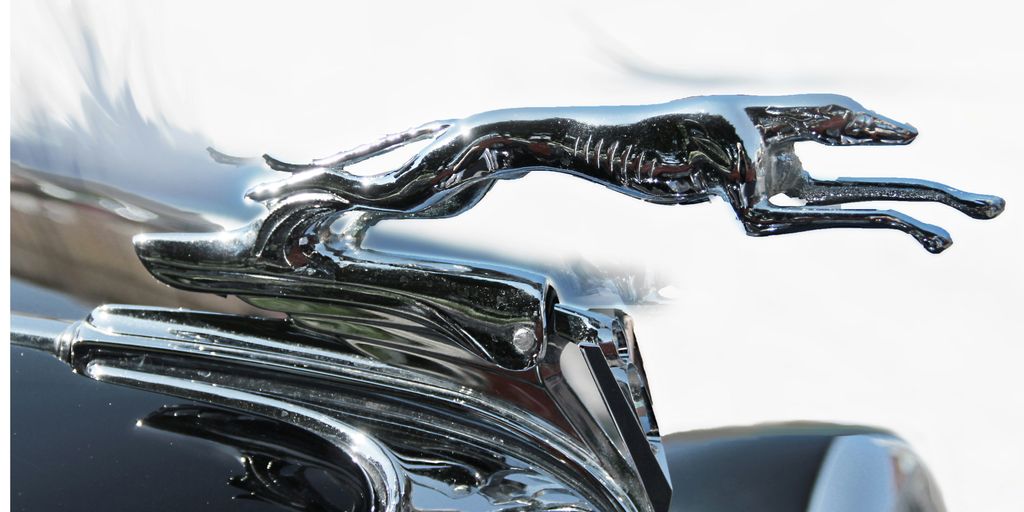Greyhound racing, a sport that has been around for a while, has sparked a lot of conversation about whether it’s right or wrong. What started as a simple chase has turned into a big industry, and now many people are asking tough questions about how greyhounds are treated. This article will look into the ethical problems tied to greyhound race, from how the dogs are viewed to the serious injuries they get, and what happens to them when they can no longer race.
Key Takeaways
- Greyhound race has a long history, but it’s been shrinking a lot lately.
- There are big worries about how racing greyhounds are treated, like being seen as just tools for racing, not pets.
- Many greyhounds get hurt or even die during races, and it’s hard to get clear information about these incidents.
- When greyhounds stop racing, they often face a tough future, sometimes ending up in overcrowded shelters or worse.
- People are working hard to stop greyhound race, with many places already banning it because of animal welfare concerns.
The History of Greyhound Race
The Origins of Greyhound Racing
The story of greyhound racing is pretty interesting. It goes way back. Like, ancient Egypt back. They found greyhound-type dogs in murals and paintings from over four thousand years ago. Can you imagine? Even King Tut had sighthounds on his tomb walls. Pharaohs apparently liked them as pets and hunters.
It wasn’t just the Egyptians, though. Ancient Arabs also thought these dogs were awesome because they were fast and strong. In England, only rich people were allowed to own them for a while. Even after that law went away, the British royalty kept being into greyhounds. So, yeah, they have a history intertwined with aristocracy.
Evolution of the Greyhound Race Industry
So, how did these fancy dogs end up racing around a track? Well, they came to the New World and farmers used them to chase jackrabbits. Then people started having coursing competitions. Basically, they’d let the dogs loose to catch a rabbit. It was like, homegrown entertainment. That’s how it started. Saint Petersburg, Florida, is where the first commercial greyhound racetrack opened in 1925. Who knew? It’s interesting to see how something that started as a way to control pests turned into a whole industry. Now, online horse racing betting is a big thing, but back then, it was all about the dogs.
The Decline of Greyhound Race
Greyhound racing isn’t as popular as it used to be. A lot of tracks have closed down. There are only a few countries where it’s still a thing. Like, Australia, Ireland, Mexico, New Zealand, the UK, the USA, and Vietnam. That’s it.
The industry faces a lot of problems. People are realizing that it’s not really sustainable. There are moral, physical, and economic costs. It’s not just about the money, it’s about the dogs.
The number of races and the money involved have been going down for years. It’s a tough situation. It’s not just about the money, it’s about the dogs. The industry is facing a lot of pressure to change. You can even find the best sports betting sites in Canada easier than a greyhound track these days.
Here’s a quick look at how things have changed:
- Fewer tracks are open.
- Less money is being bet.
- More people are speaking out against it.
Ethical Concerns in Greyhound Race
Greyhounds as Commodities
Greyhounds, in the racing industry, are often viewed more as assets than animals. This commodification leads to decisions that prioritize profit over well-being. The inherent welfare issues that go hand-in-hand with the commodification of racing dogs are plentiful and devastating to the animals. Excessive breeding, the destruction of retired dogs, and inadequate care all stem from this perspective. It’s a business, and the dogs are simply inventory. This is a problem.
Abuse and Mistreatment of Racing Greyhounds
Abuse and mistreatment are serious concerns. While not every greyhound experiences direct abuse, the conditions they endure can be considered mistreatment. This includes confinement for long hours, inadequate socialization, and rigorous training regimes that push them beyond their physical limits. It’s not just about physical harm; it’s about the overall quality of life. There is a horse betting guide that can help you understand the industry.
The Impact on Greyhound Welfare
The impact on greyhound welfare is significant and multifaceted. The lack of transparency in the industry makes it difficult to fully assess the extent of the problem. However, reports consistently highlight issues such as high injury rates, inadequate veterinary care, and a lack of oversight. It’s a system that often fails to prioritize the dogs’ needs. The numbers are staggering:
- Lack of transparency on euthanasia, injuries, rehoming numbers, breeding, and health statistics;
- Inadequate recording and monitoring of injuries sustained by dogs;
- A culture of non-enforcement and non-compliance of welfare rules;
- Serious deficiencies in Greyhound Racing New Zealand’s database;
- A high injury rate within the sport.
The inherent welfare issues that go hand-in-hand with the commodification of racing dogs are plentiful and devastating to the animals: excessive breeding; destruction of retired dogs; the burden placed on animal rescue organizations; the likelihood of injuries; and inadequate housing, sustenance, affection and veterinary care.
It’s a complex issue with no easy solutions. The history of greyhound racing is long, but that doesn’t make it right. The welfare of these animals must be a priority.
Injuries and Fatalities in Greyhound Race
Common Injuries Suffered by Racing Greyhounds
Racing greyhounds face a high risk of injury. The intense speed and sharp turns on the track often lead to accidents. Fractures are common, especially in the legs. Muscle injuries, lacerations, and spinal damage also occur. Overexertion can cause heat stroke and seizures. It’s a tough life for these dogs, no doubt about it.
- Broken legs
- Spinal injuries
- Heat stroke
Documented Deaths in Greyhound Race
Sadly, greyhound racing results in numerous deaths. Some dogs die on the track from catastrophic injuries. Others are euthanized due to the severity of their wounds. Heartbreaking, isn’t it? From 2021 to 2024, 373 race fatalities were recorded. A large percentage of these deaths involved fractures. The first turn is a particularly dangerous spot. Sometimes, injuries happen in the catching pen after the race. It’s a grim reality.
Lack of Transparency in Injury Reporting
One of the biggest problems is the lack of transparency. Not all tracks publish injury and death statistics. This makes it difficult to get a clear picture of the problem. Injuries during training and non-TAB races often go unreported. Post-race injuries might not be formally recorded either. It’s like they’re trying to hide something, right? We need better reporting to understand the true extent of the suffering. This lack of transparency makes it hard to find the safest sports betting sites for those interested in wagering without contributing to harm. The industry needs to step up and be more open about what’s happening. It’s the only way to make informed decisions and push for change. For those looking for sports betting bonuses, it’s important to consider the ethical implications of supporting industries like greyhound racing.
The lack of comprehensive data makes it difficult to assess the true scope of injuries and fatalities in greyhound racing. This lack of transparency raises serious concerns about the industry’s commitment to greyhound welfare. Without accurate data, it’s impossible to implement effective measures to protect these animals.
The Fate of Retired Racing Greyhounds
Overbreeding and Disposal of Greyhounds
The greyhound racing industry faces a harsh reality: overbreeding. To find a few suitable racers, many more are bred than needed. It’s estimated a large percentage of greyhounds never even make it to the track. What happens to them? This creates a surplus, and unless rehoming efforts keep pace, many healthy dogs face an uncertain future. Financial incentives for breeding only make the problem worse. It’s a tough situation, and the numbers are staggering.
Burden on Animal Rescue Organizations
Greyhounds careers are short. They might start racing around 18 months old and retire as young as two years old, or maybe five if they are lucky. Injuries can cut careers even shorter. This high turnover puts a huge strain on horse racing betting adoption groups. While some industry-based groups exist, most rely on volunteer rescue groups. These groups depend on community support. Many adopted greyhounds get returned, too. This can be up to 25% in some areas, further burdening rescue efforts. It’s a constant cycle of dogs needing homes, and resources are stretched thin.
Sale to Research Facilities
What happens to greyhounds deemed no longer profitable? It’s a question with uncomfortable answers. Some are lucky enough to find homes through adoption agencies. Others face a far grimmer fate. There have been reports of retired racing greyhounds being sold to research facilities. These facilities may use the dogs for invasive experiments. This includes bone experiments and other procedures. It’s a disturbing end for dogs who have already given their all on the track. The lack of transparency makes it hard to know the full extent of this practice.
The racing industry often views greyhounds as property, not pets. Their value is tied to their ability to generate profit. Once they can no longer race, their fate becomes uncertain. This commodification of animals is a central ethical concern in the debate surrounding greyhound racing.
Legal and Legislative Efforts Against Greyhound Race
Ineffectiveness of Anti-Cruelty Statutes
Anti-cruelty statutes, they sound good, right? But when it comes to greyhound racing, they often fall short. The core issue? These laws often view animals as property. This makes it tough to prosecute the systemic abuse inherent in the industry. It’s like trying to fix a broken system with a band-aid. The laws just don’t go far enough to protect the dogs from the realities of racing. It’s a tough pill to swallow, but it’s the truth. The MBLL regulations are not enough.
Grassroots Movements to Ban Greyhound Race
When the law fails, people rise up. Grassroots movements have been instrumental in pushing for change. Take GREY2K USA, for example. They started as a small group in Massachusetts and have grown into a national force. Their strategy? Educate the public and get initiatives on the ballot. They raise money, gather signatures, and fight tooth and nail to end dog racing. These groups show that change is possible, even when the odds are stacked against them. They are the David facing the Goliath of the greyhound industry. The history of greyhound racing is long, but it doesn’t have to be long into the future.
International Bans on Greyhound Race
It’s not just a US issue. Other countries have taken a stand against greyhound racing. These bans send a powerful message. They show that the world is waking up to the cruelty of the sport. These bans often come after years of campaigning by animal welfare groups. They demonstrate that change is possible on a global scale. It’s a domino effect, and hopefully, more countries will follow suit. The best mobile betting apps are not worth the cost of animal suffering.
The fight against greyhound racing is a marathon, not a sprint. It requires dedication, perseverance, and a willingness to challenge the status quo. It’s about giving a voice to those who cannot speak for themselves and creating a more humane world for all creatures.
Economic Realities of Greyhound Race
Declining Revenue in the Greyhound Race Industry
The greyhound racing industry is facing tough times. It’s no secret. Revenue is down, and tracks are closing. It’s a slow bleed, and it doesn’t look like it’s going to turn around anytime soon. The industry holds less than 1% of the entire U.S. gambling market. That’s a tiny slice of the pie. Florida, for example, saw its revenue from dog racing plummet. A big drop, no doubt.
Taxpayer Subsidies for Greyhound Race
Why are taxpayers footing the bill for a dying industry? Good question. Some states use tax money to prop up greyhound racing. It’s a controversial practice, to say the least. Is it really the best use of public funds? Many people don’t think so. It’s like throwing good money after bad. The subsidies keep the industry afloat, but at what cost? It’s a debate worth having.
The Unsustainability of Greyhound Race
Greyhound racing just isn’t sustainable. The numbers don’t lie. Fewer people are betting on the races. Costs are rising. It’s a recipe for disaster. The industry is struggling to stay alive. The decline in gambling and breeding is significant. It’s hard to see a future for greyhound racing. The writing is on the wall.
The economic realities of greyhound racing are bleak. The industry is in decline, propped up by taxpayer subsidies, and ultimately unsustainable. It’s time to consider the ethical implications of supporting an industry that is struggling to survive. Maybe it’s time to pull the plug. Maybe it’s time to focus on the welfare of the dogs. Maybe it’s time for a change.
Here’s a look at how injuries can impact a dog’s career:
| Injury Type | Impact on Career |
|---|---|
| Broken Leg | Career Ending |
| Spinal Cord | Career Ending |
| Minor Sprain | Missed Races |
It’s a tough sport, and the dogs pay the price. The sports betting community might be interested in the races, but the long-term outlook is grim. The industry needs to adapt or fade away. It’s that simple.
Advocacy and Public Awareness
Organizations Fighting Greyhound Race
There are many groups dedicated to ending greyhound racing. These organizations work tirelessly to expose the cruelty inherent in the industry and advocate for the dogs’ well-being. They employ various strategies, including public education campaigns, legislative lobbying, and direct action. Some groups focus on rescuing and rehoming retired racers, while others concentrate on shutting down tracks and pushing for legislative change. It’s a tough fight, but their passion is undeniable. For example, the Sport Select Pro Line is a great way to support these organizations.
Raising Public Awareness of Greyhound Welfare
Changing public perception is key to ending greyhound racing. Many people are simply unaware of the suffering these dogs endure. Raising awareness involves educating the public about the realities of racing, from the injuries and confinement to the overbreeding and disposal of unwanted dogs. Documentaries, social media campaigns, and celebrity endorsements can all play a role in shifting public opinion. It’s about showing people the truth and letting them make informed decisions. The more people know, the more likely they are to support a ban.
Here are some ways to raise awareness:
- Sharing information on social media.
- Writing letters to elected officials.
- Supporting organizations dedicated to greyhound welfare.
- Talking to friends and family about the issue.
The Call for a Complete Ban on Greyhound Race
The ultimate goal for many advocates is a complete ban on greyhound racing. They argue that the industry is inherently cruel and that no amount of regulation can truly protect the dogs. Bans have already been enacted in several states and countries, demonstrating that change is possible. The push for a nationwide ban in the US continues, fueled by growing public awareness and the tireless efforts of animal welfare organizations. The future of online legal sports betting may depend on these bans. It’s a long road, but the momentum is building.
The call for a complete ban isn’t just about stopping the racing; it’s about recognizing the inherent worth of these animals and ensuring they live lives free from exploitation and suffering. It’s about creating a more compassionate world where animals are treated with respect and kindness, not as commodities to be used and discarded.
Conclusion
So, when you look at everything, it’s pretty clear that greyhound racing has some big problems. We’re talking about dogs getting hurt, being treated like they’re just things, and then often just tossed aside when they can’t race anymore. It’s a tough situation for these animals, and honestly, it doesn’t really fit with how most people feel about animals these days. Lots of places have already stopped this kind of racing, and that really shows where things are headed. It just makes sense to move away from something that causes so much trouble for these dogs. They deserve better than to be part of an industry that often puts profit ahead of their well-being. It’s time to think about what’s right for them, not just what’s been done in the past.
Frequently Asked Questions
How did greyhound racing begin?
Greyhound racing started in ancient times, with people enjoying races between these fast dogs. It became a professional sport in the early 1900s in the United States. Over time, it grew into a big industry, but lately, it has been shrinking.
What are the main problems with greyhound racing?
Many people worry about greyhounds used for racing. They are seen as tools to make money, not as pets. This often leads to poor living conditions, not enough care, and even abuse.
Do racing greyhounds get injured often?
Racing greyhounds often get hurt. They can break bones, get paralyzed, or even die during races. It is hard to know the true number of injuries and deaths because this information is not always shared openly.
What happens to greyhounds after they stop racing?
When greyhounds stop racing, their future is uncertain. Many are bred, but only a few are good racers. Those that are not good enough, or those that retire, might be killed. Some end up in animal shelters, which are already full, and some are even sold for scientific experiments.
What is being done to stop greyhound racing?
Many groups and people are working to stop greyhound racing. They want to make laws against it, and they try to teach people about the bad things that happen to these dogs. Some countries and many states in the U.S. have already banned it.
Is greyhound racing still a profitable business?
The greyhound racing business is losing money. It often needs money from taxpayers to stay open. This makes it a sport that is not fair to animals and is also not good for the economy.













